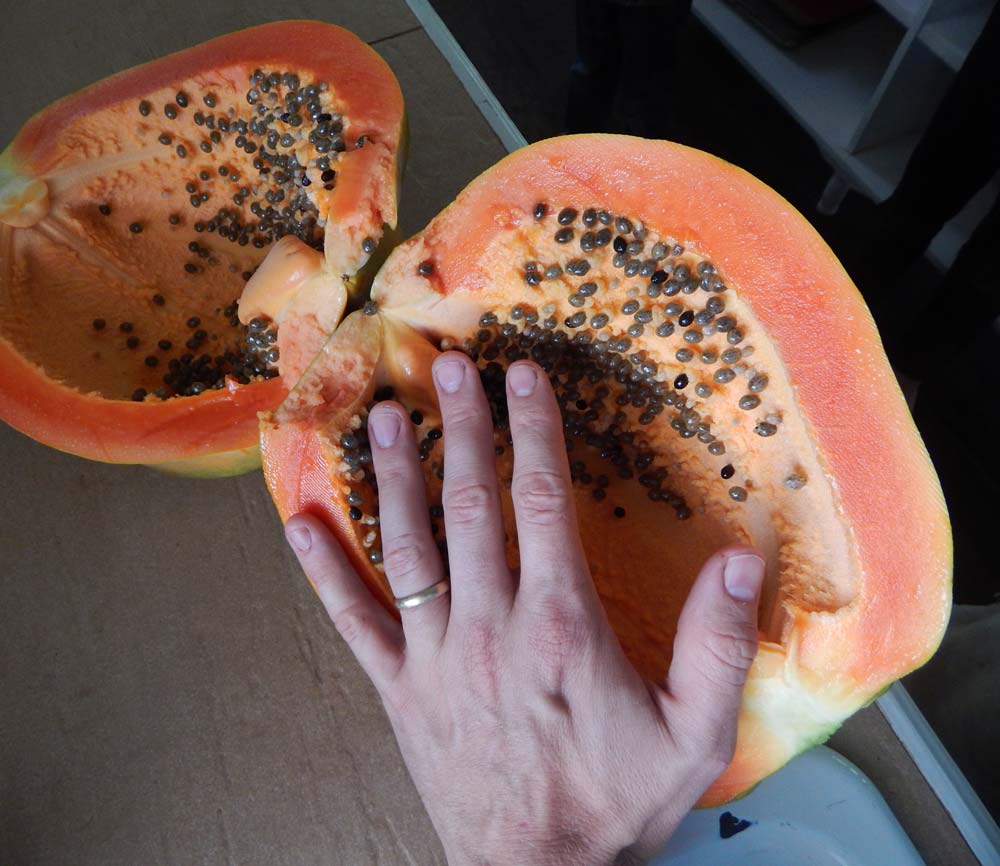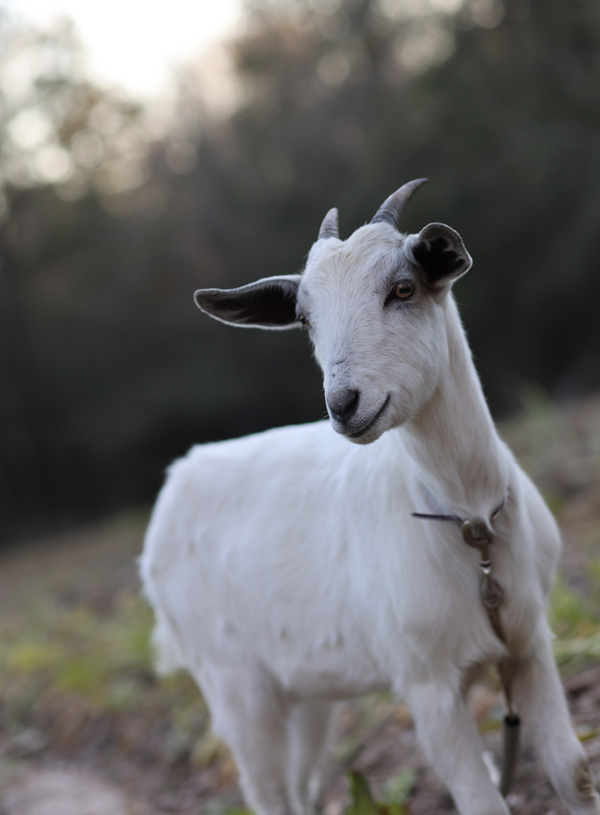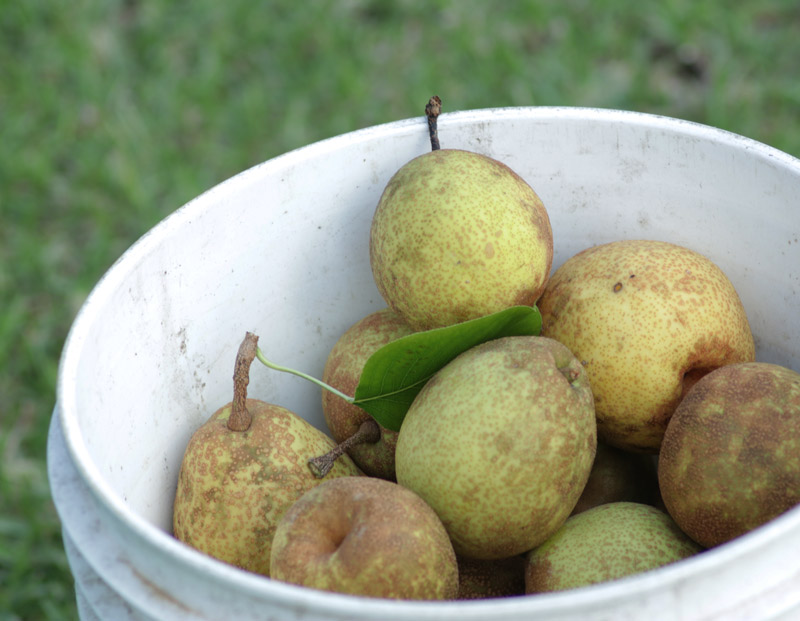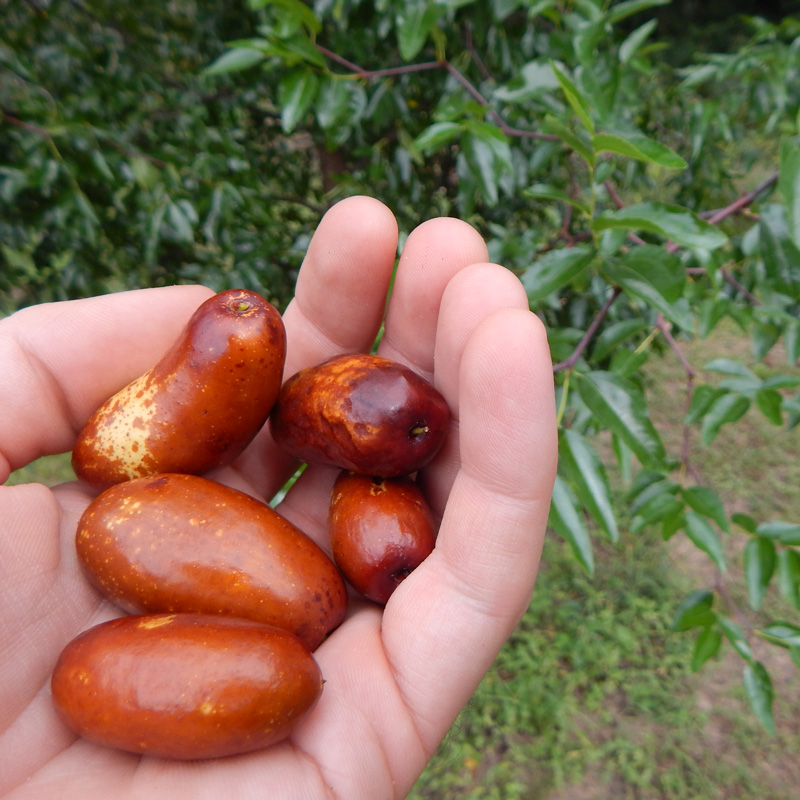In his book Forest Gardening, food forest pioneer Robert Hart estimates that a family could be fed from a half-hectare temperate climate food forest.
Of course, since we operate in Freedom Units here in Florabama, I had to figure out how much area that really is by going online for an answer.
0.5 hectares = 1.235526 acres. So let’s call it 1 1/4 acres.
By a family, Robert says something like “about ten people.” (I’d find the full quote but it’s not even 6AM yet and I might wake up my wife by digging around in the pile of books by my bedside table.)
In a tropical climate, of course, you likely wouldn’t need nearly that much space. Assuming decent rainfall and somewhat useful soil, I am convinced that with proper management one could feed 10 people on a half acre in the tropics. Maybe with even less. The sheer quantity of food which can be produced staggers the mind. One papaya tree, taking up about six square feet of space, is capable of producing an annual 200lbs of fruit only a year after being sown from seed.

Add to that the prolific production of breadfruit, coconuts, yams, taro, passionfruit, bananas and plantains, etc., and you would not go hungry.
Yet in a temperate climate food forest there is also the potential for good food production, especially if the gardener takes the time to fill the gaps in the system with as many useful and edible species as possible.
If a forest is allowed to reach climax, the canopy closes and production is curtailed as there is little being produced by anything beneath the top layer. Yet in a managed forest garden, this is prevented and more layers are open to light and many niches can be filled with shrubs, vines, herbs, vegetables, roots, mushrooms, etc.
Productive patches of potatoes, sweet potatoes, ground nuts and other filling roots may be produced around the edges, along with grains, pumpkins, squash, beans and other staple annuals. This, coupled with the production of nuts and fruits will help keep the owner and his family fed.
Though Robert didn’t plan animals into his system, one could greatly increase the production of healthy protein by also adding pigs, chickens or ducks into the system with appropriate confinement. Ducks are particularly easy to keep and do less damage than chickens if allowed to free-range. Even some dairy goats on a tether system could be added; however, they really are a source of destruction and should not be attempted without knowledge! We’ve had goats and then later have removed said goats from our homestead on two occasions due to the maintenance required as well as the destruction they caused.

Hey… got any new trees I can destroy?
The easiest to maintain food forest system is one without animals, of course. You can simply drive across the country for two months and then return without anything starving to death. However, it is a good thing to have eggs and meat if it works with your life.
Feeding animals from the food forest will require some maturity in the system first, otherwise you’ll have to import feed. We’re currently using two pigs to clear new areas in our year-old food forest, but we do have to bring them lots of scraps from the kitchen and expired bread from the bakery, plus we have to occasionally supplement them with purchased food. If the system was well-established, we might be able to feed them from it if we planned accordingly, with big banks of Jerusalem artichokes and lots of nuts and fallen fruit. This would likely require a decade of growth first. Chickens would be easier, and ducks would be easiest, as they are very good at foraging and living on next-to-nothing. The gardener should make sure that his flocks are small to begin with so they don’t overburden the system, and then he can add to them as the food forest matures.
I could see an animal-free 1 1/4 acre system still feeding ten people without much difficulty. Our Grocery Row Garden system is a modified food forest and at only a year old, it’s already on track to make over a thousand pounds of food this year – and it’s less than 1/4 acre in size! Our main food forest isn’t being tended like that system, but if it was, its 1/2 acre could easily produce a ton of food, even though it too is only a year old and none of the trees are productive yet.
In the early years, your production mostly comes from annuals and root crops. Later, you get lots and lots of berries and some faster producing fruits, then later still, you get baskets and baskets of nuts and fruits.
Just consider the production of a single mature pear tree, then multiple that by a hundred!

It’s possible!
We need more food forests and less food from far away.
And now is the time to start.


2 comments
Thank you for the excellent post! It contains a lot of Good info.
Ten is an easy target to reach, even in areas that are currently not considered ‘arable land’ .. so long as one is willing to wait a few years for your forest to mature. A few years ago, I postulated that one acre of temperate forest could easily support a dozen people – Making alterations to include animals as *workers* in the system (hat tip to Joel Salatin and Mark Shepherd) increases productivity quite a bit – think of the animals in terms of the work that they do in the ecosystem, and animal protein is a byproduct of maintaining a healthy population. Those animals can be domesticated, but with some planning and consideration to the needs of wildlife, one can build a system that supports a good number of useful wild species that are every bit as tasty .. and may be left alone for months at a time with no significant loss of function. (IE: I set up feeders and baths for wild birds in hopes of controlling web worms, and got a steady supply of doves in the bargain. The sunflowers that go into the feeders help out in other ways as well) For back yard gardens, though .. chickens, ducks, and small fish ponds really pack the protein in!
Comments are closed.